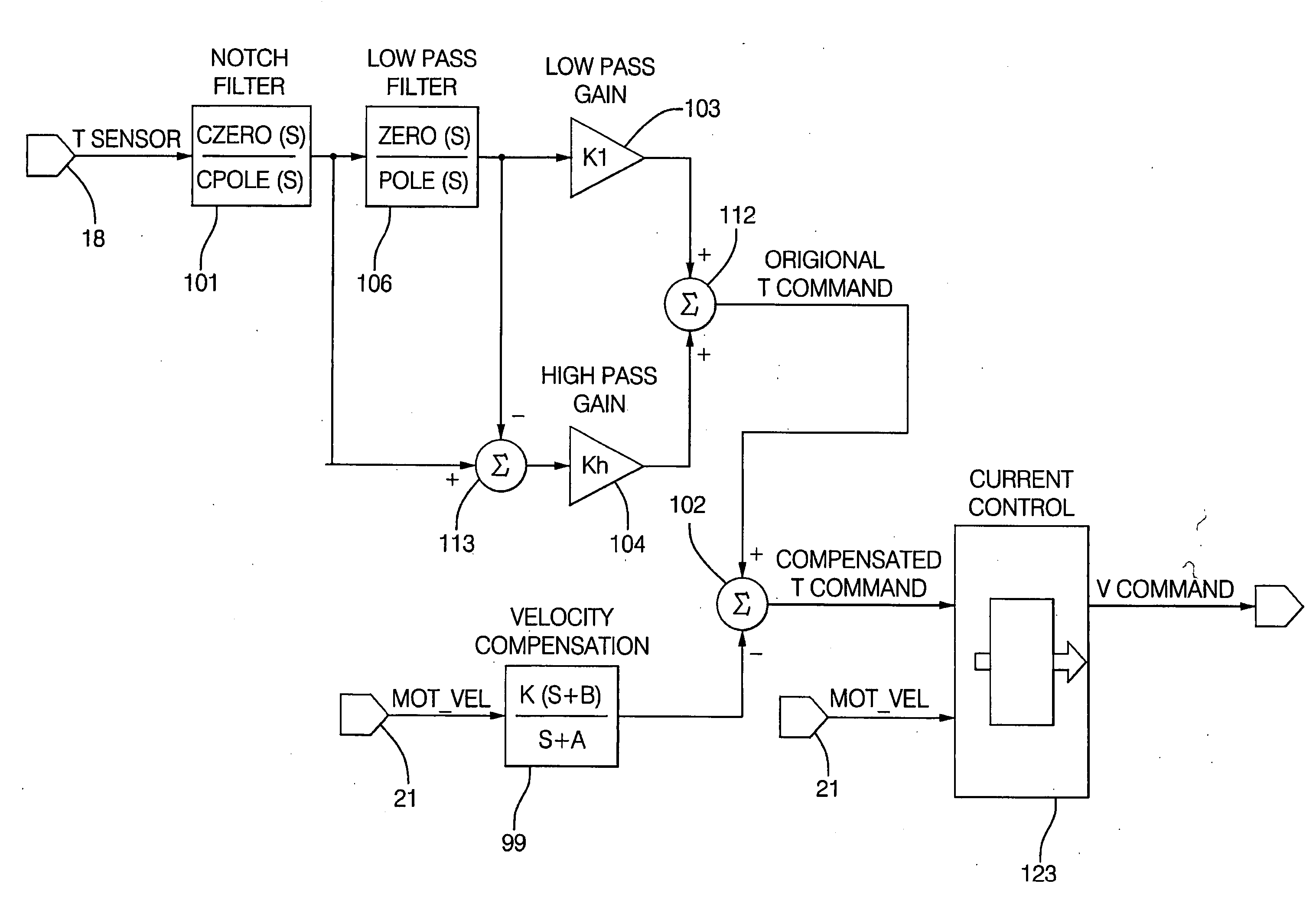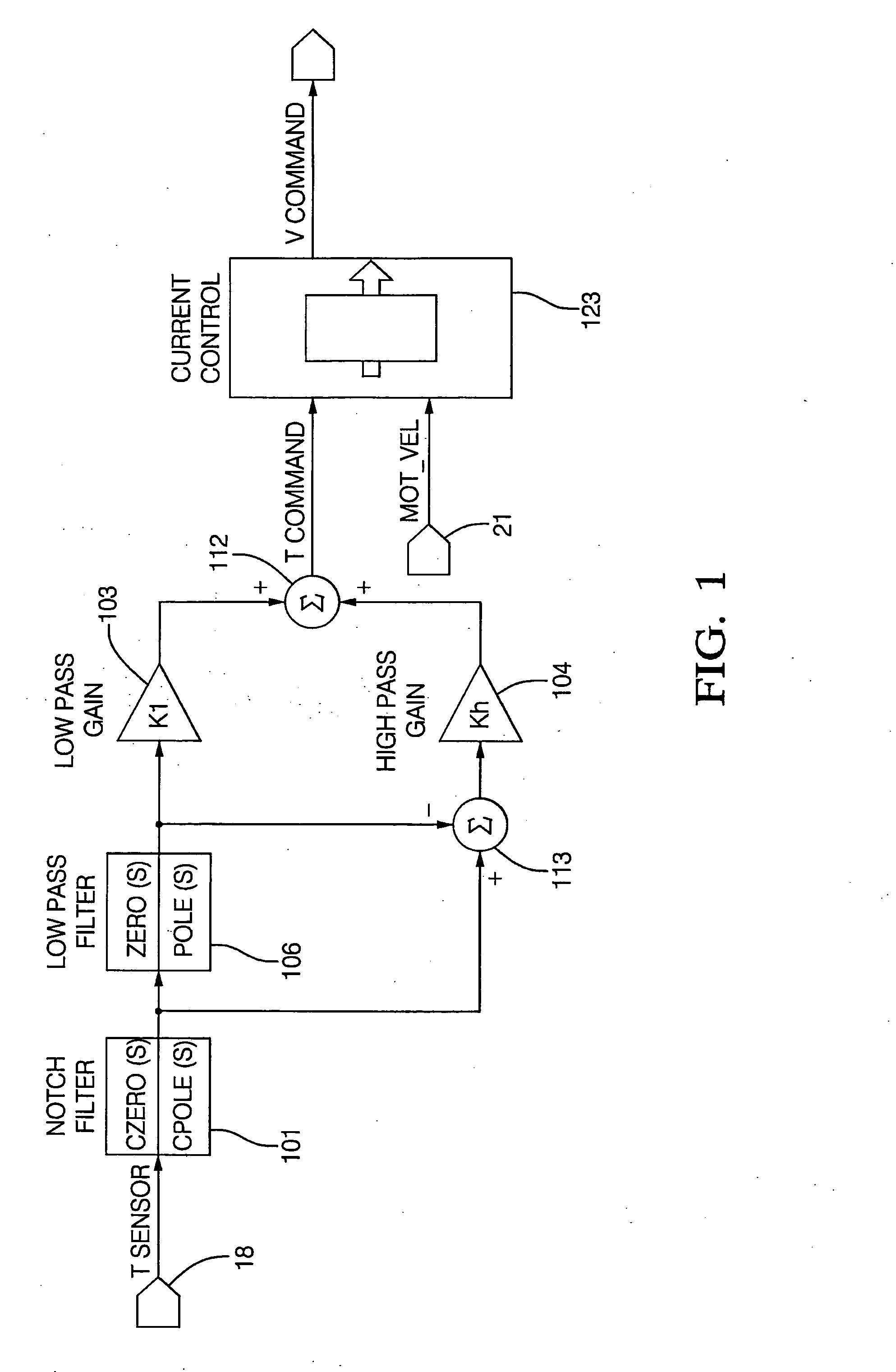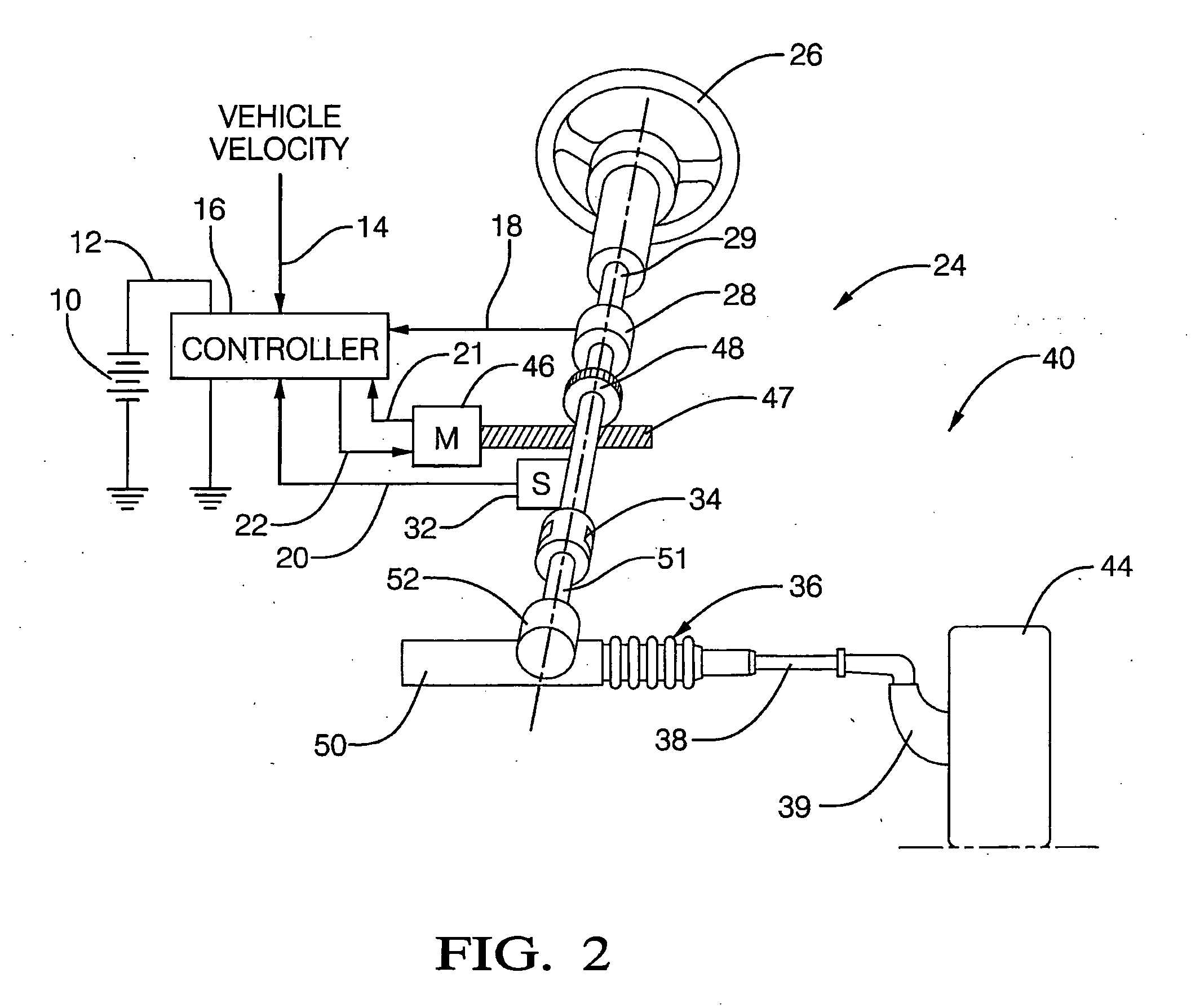Velocity compensation control for electric steering systems
a technology of velocity compensation and electric steering, which is applied in the direction of steering initiation, instruments, vessel construction, etc., can solve the problems of increasing high frequency disturbance sensitivity, difficult to apply a control architecture, and no effective way
- Summary
- Abstract
- Description
- Claims
- Application Information
AI Technical Summary
Benefits of technology
Problems solved by technology
Method used
Image
Examples
Embodiment Construction
[0018] Electric power systems which utilize forward path motor BEMF compensation are more sensitive to motor velocity disturbances. One approach to address and control the ill effects of high frequency disturbances is to eliminate the source of the disturbance. The other approach is to reduce sensitivity of the EPS system to high frequency disturbances by changing the control strategy or architecture. The disclosed embodiments address the latter.
[0019] Generally, lower frequency torque compensators e.g., notch filters have to be deeper to provide the same stability margin as a higher frequency torque compensator. It should be appreciated that deeper notch filters (e.g., those exhibiting more gain reduction at the notch frequency) while providing necessary stability degrade the disturbance rejection properties of the system at the notch frequency. Further, it should be recognized that a closed loop system cannot reject disturbances where the gain is very low, as it is at the notch ce...
PUM
 Login to View More
Login to View More Abstract
Description
Claims
Application Information
 Login to View More
Login to View More - R&D
- Intellectual Property
- Life Sciences
- Materials
- Tech Scout
- Unparalleled Data Quality
- Higher Quality Content
- 60% Fewer Hallucinations
Browse by: Latest US Patents, China's latest patents, Technical Efficacy Thesaurus, Application Domain, Technology Topic, Popular Technical Reports.
© 2025 PatSnap. All rights reserved.Legal|Privacy policy|Modern Slavery Act Transparency Statement|Sitemap|About US| Contact US: help@patsnap.com



